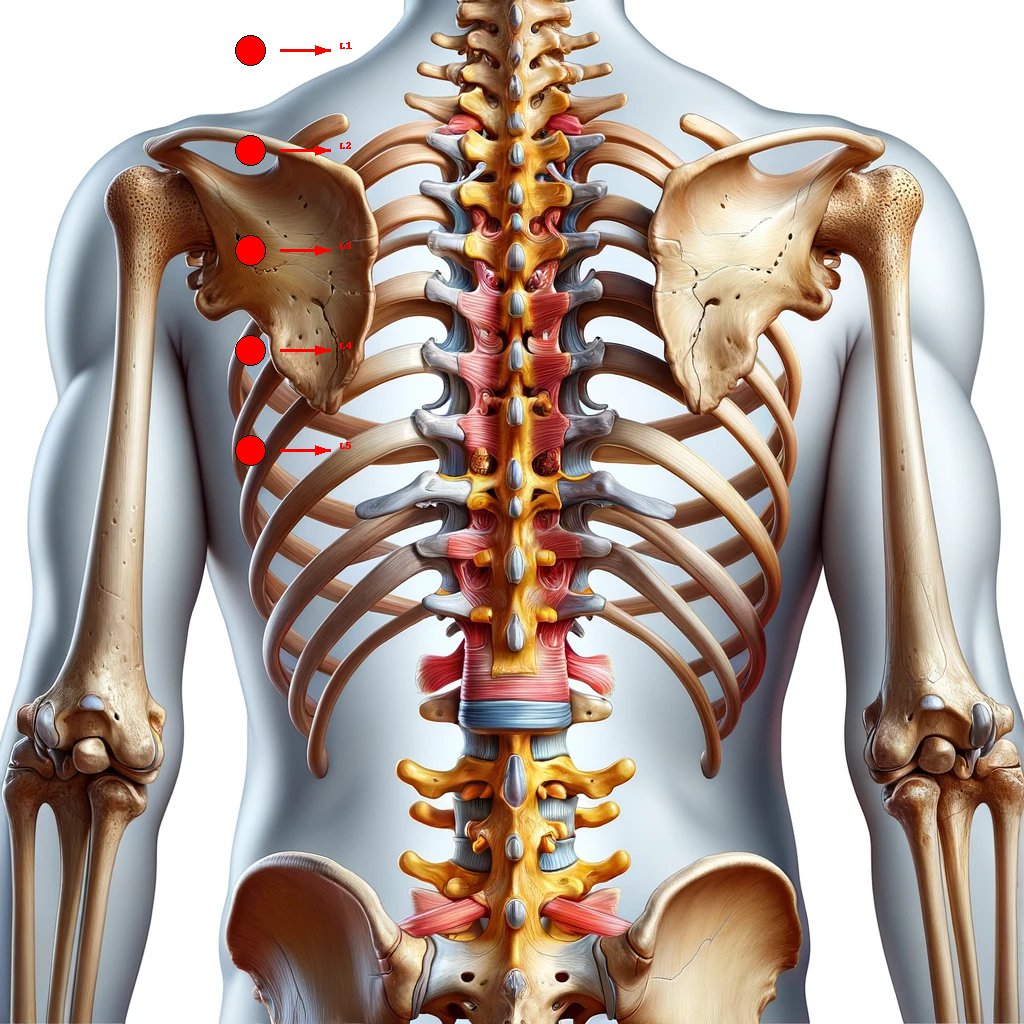Back pain is a widespread issue, impacting people across various age groups and lifestyles. It is commonly divided into two categories: lower back pain and upper back pain. Understanding the nuances between these types, including specific medical conditions associated with each, is essential for effective treatment and management. This comprehensive blog post will explore the lower vs upper back pain, highlighting causes, symptoms, and appropriate treatment options.
Lower Back Pain
Lower back pain primarily affects the lumbar region, encompassing the five vertebrae (L1-L5) in the lower spine. This area bears much of the body’s weight, making it a frequent site of discomfort.

Lower back pain causes:
- Muscle or Ligament Strain: Heavy lifting or sudden movements can strain back muscles and spinal ligaments.
- Bulging or Ruptured Discs: The inner material of a disc can bulge or rupture, impacting nearby nerves.
- Arthritis: Osteoarthritis can lead to spinal stenosis, where the space around the spinal cord narrows.
- Skeletal Irregularities: Conditions like scoliosis can induce back pain.
- Osteoporosis: Your spine’s vertebrae can develop compression fractures if your bones become porous and brittle.
- Stress and Emotional Tension: Stress can lead to muscle tension in the back, and prolonged tension can result in chronic back pain.
Medical Conditions:
- Herniated Disc: Occurs when a disc’s inner material leaks out, potentially irritating nerves.
- Sciatica: Characterized by pain radiating along the sciatic nerve, stretching from the lower back to the legs.
- Spinal Stenosis: Involves the narrowing of the spinal canal, causing pain or numbness.
- Degenerative Disc Disease: Age-related condition where discs lose hydration and elasticity, resulting in pain.
- Spondylolisthesis: One vertebra slips over another, leading to lower back pain and sometimes leg pain.
Lower back pain treatment options:
- Physical Therapy
- Medication (Pain relievers, anti-inflammatory drugs)
- Exercise (Low-impact activities like swimming or walking)
- Surgery (In severe cases)
Upper Back Pain
Upper back pain, less common than lower back pain, pertains to discomfort in the thoracic spine, situated between the neck base and the rib cage’s bottom.
Upper back pain causes:
- Poor Posture: Extended periods of hunching over can strain upper back muscles.
- Muscle Overuse or Injury: Caused by repetitive motions or trauma.
- Herniated Disc: While less frequent in the upper back, it can still occur.
- Myofascial Pain: Chronic pain in the upper back muscle tissue.
Medical Conditions:
- Myofascial Pain Syndrome: Involves chronic muscle pain, often related to muscle overuse or repetitive strain.
- Osteoarthritis: The wearing down of cartilage in spinal joints, leading to upper back stiffness and pain.
- Kyphosis: An exaggerated forward spinal curvature, causing pain and stiffness.
- Fibromyalgia: A widespread chronic pain condition, frequently affecting the upper back.
- Thoracic Herniated Disc: Rarer than in the lower back, this condition can cause upper back pain when it occurs.
Upper back pain treatment options:
- Chiropractic care or Physical Therapy.
- Acupuncture or Massage.
- Exercise and Stretching routines.
- Medications for pain and inflammation.
Comparison Table: Lower vs. Upper Back Pain
Lets understand this better with the below table. It will provide a clear and concise way to understand the differences between upper and lower back pain.
| Feature | Lower Back Pain | Upper Back Pain |
|---|---|---|
| Common Causes | Herniated Discs, Sciatica, Lumbar Arthritis | Myofascial Pain, Thoracic Herniated Disc, Thoracic Spine Osteoarthritis |
| Symptoms | Localized pain, radiating pain, muscle spasms | Sharp or burning pain, muscle tightness, stiffness, pain when breathing deeply |
| Affected Areas | Lumbar spine, possibly radiating to buttocks and legs | Thoracic spine, potentially affecting the shoulders and neck |
| Aggravating Factors | Prolonged sitting, heavy lifting, obesity | Poor posture, prolonged computer use, repetitive motions |
| Diagnostic Tests | MRI, X-rays, nerve conduction studies | MRI, X-rays, electromyography (EMG) |
| Treatment Options | Physical therapy, pain medication, in some cases surgery | Physical therapy, posture correction, pain medication |
| Prevention | Regular exercise, proper lifting techniques, ergonomic work settings | Ergonomic adjustments, stretching exercises, posture improvement |
Prevention and Lifestyle Changes
Both lower and upper back pain can be mitigated through lifestyle changes and preventive measures, such as:
- Ergonomic Adjustments: Adopting proper posture and ergonomic work settings.
- Regular Exercise: Strengthening core muscles to support the back.
- Weight Management: Keeping a healthy weight to reduce back stress.
- Stress Management: Utilizing techniques like yoga or meditation to alleviate muscle tension.
Read more about the case and treatment you can follow this blog on back pain
Conclusion
While lower and upper back pain can be quite debilitating, comprehending their differences, especially the specific medical conditions causing them, is crucial for effective management and treatment. Consulting with a healthcare professional for an accurate diagnosis and treatment plan is vital if you’re experiencing back pain. With appropriate care, back pain can often be managed successfully, enabling individuals to lead active, healthy lives.
